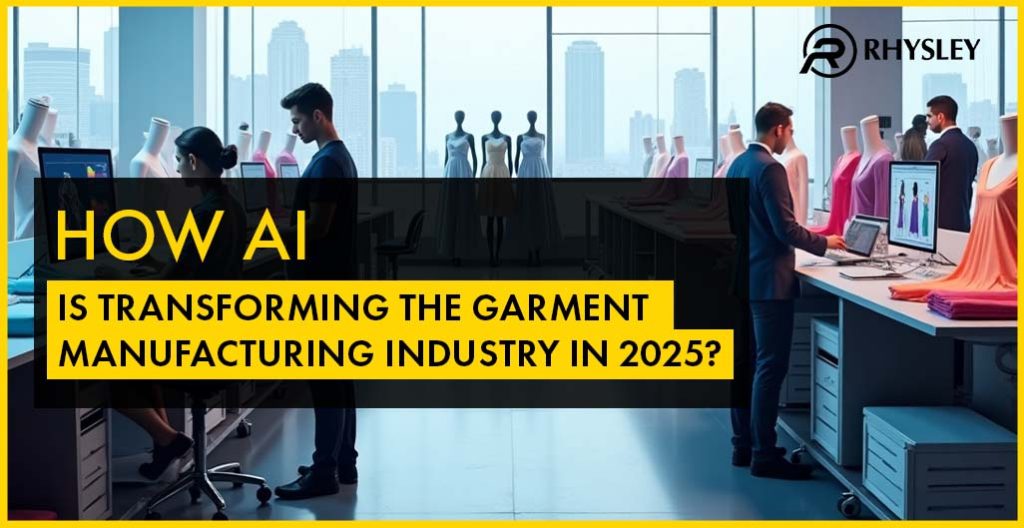
How AI is Transforming the Garment Manufacturing Industry in 2025
The apparel industry has witnessed a remarkable transformation, as the integration of artificial intelligence has changed numerous aspects of garment manufacture. AI is revolutionizing garment manufacturing by optimizing automated cutting and sewing.
Advanced AI-powered robots and machines improve the accuracy, speed, and uniformity of fabric processing, leading to fewer mistakes and significantly higher production rates.
Moreover, AI-powered quality control and defect detection mechanisms have become instrumental in ensuring the production of high-quality garments with minimal wastage. Real-time analysis of fabric properties, stitching patterns, and other critical factors by AI-powered cameras and sensors enables the swift identification and rectification of any inconsistencies or defects, ensuring the delivery of flawless products to consumers.
How AI is used in garment production
A number of aspects of clothing production have been made more efficient by the incorporation of artificial intelligence. Among the important uses are:
Automated Sewing and Cutting Automated sewing machines
AI-driven robots improve fabric cutting and stitching accuracy, speed, and consistency. This improves production efficiency and lowers human error.
Quality Control and Identification of Defects
AI-powered cameras and sensors can detect stitching errors, fabric flaws, and inconsistencies in Real time, guaranteeing premium clothing with little waste.
Optimization of the Supply Chain
Supply chain logistics are improved, inventory is managed, and demand is predicted with the help of AI. By examining historical patterns, machine learning algorithms recommend improved methods for scheduling production and acquiring materials.
On-Demand and Personalized Production
AI enables apparel manufacturers to deliver custom-tailored garments according to their preferences, simultaneously cutting down on excess inventory and addressing the rising demand for personalized fashion options.
Latest AI Trends in Apparel Manufacturing
The rapid evolution of AI has led to several innovative trends in the apparel industry. Here are some of the most significant AI trends in 2025:
AI-Powered Fashion Design
Designers are leveraging AI tools to create unique patterns and styles based on market trends and customer preferences. AI-generated designs help brands stay ahead in the competitive fashion industry.
Predictive Analytics for Demand Forecasting
AI-driven predictive analytics allow clothing manufacturers to anticipate market demands accurately, minimizing overproduction and reducing unsold stock.
Sustainable and Smart Manufacturing
AI contributes to sustainability by optimizing fabric usage, reducing water consumption, and minimizing waste during production.
AI-Enabled Smart Warehousing
Garment manufacturers are utilizing AI-powered robots and automated storage systems to manage inventory efficiently and ensure faster order fulfillment.
Benefits of AI in the Textile Industry
The adoption of AI in garment manufacturing provides several benefits, making the industry more competitive and efficient:
Enhanced Productivity
AI-driven automation speeds up manufacturing processes, reducing production time and increasing output.
Cost Reduction
AI minimizes waste, improves material utilization, and lowers operational costs.
Improved Product Quality
AI-enabled defect detection ensures high-quality garments, leading to better customer satisfaction.
Sustainability
AI helps reduce environmental impact by optimizing resource usage and minimizing fabric waste.
Better Decision-Making
AI provides real-time data insights, allowing clothing manufacturers to make informed business decisions.
Looking Beyond 2025
As we look toward the future of garment manufacturing, emerging AI applications promise even greater transformations. Personalization at scale—where individual garments are customized based on consumer preferences and body measurements—is becoming economically viable through AI-driven production systems.
Meanwhile, blockchain integration with AI provides unprecedented supply chain transparency, allowing consumers to verify the ethical and environmental credentials of their purchases.
The apparel industry’s AI revolution isn’t slowing down—it’s accelerating, reshaping an ancient craft into a cutting-edge technology sector where innovation and tradition work in harmony.